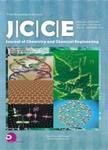Evaluation of the Toxicity of Stone Hair Dye & Paraphenylenediamine by MTT Bioassays in Vitro
作者机构:Assiut Lab.of Medico-legal DepartmentMinistry of JusticeAssuit BranchEgypt Chemistry DepartmentFaculty of ScienceMinia UniversityEI-Minia 61519Egypt Chemistry DepartmentFaculty of ScienceAssiut UniversityAssiut 71516Egypt Department of Forensic Medicine&ToxicologyFaculty of MedicineAssiut UniversityAssiut 71516Egypt Institute of BioengineeringUnit of Toxicology and Chemical SafetyUniversity Miguel Hernhndez of Elche(Alicante)Spain
出 版 物:《Journal of Chemistry and Chemical Engineering》 (化学与化工(英文版))
年 卷 期:2010年第4卷第5期
页 面:36-40页
学科分类:0710[理学-生物学] 081702[工学-化学工艺] 07[理学] 08[工学] 0817[工学-化学工程与技术] 071002[理学-动物学]
主 题:SH-Sy5y cells SHD&PPD in vitro method MTT assay
摘 要:Para-phenylenediamine (PPD), tile main toxic ingredients of hair dyes, have been used by millions of consumers to improve their appearance. Stone Hair Dye (SHD) mainly contain PPD. SHD and PPD were evaluated by 3-(4, 5-dimethylthiazol-2-yl)-2, 5-diphenyltetrazdium bromide or MTT assay, which measures mitochondria metabolism in the entire cell culture and provides information about the percentage of cell survival. Utilizing the MTT assay, the cytotoxicity of SHD and PPD was determining on SH Sy5y culture from nervous system of rat. The short term exposure SH Sy5y culture were incubated with various aqueous solutions of different concentrations of SHD and PPD, and the LC50 of SHD and para-phenylenediamine was found to be 9.15 and 12.4 mg/ml. With increasing the concentration, cytotoxicity effect increase in PPD and SHD. There is a significant differences (P〈0.01) of cytotoxicity among concentrations used. It concluded that in vitro assay could give important information of the mechanism of toxicity at low dosages.



